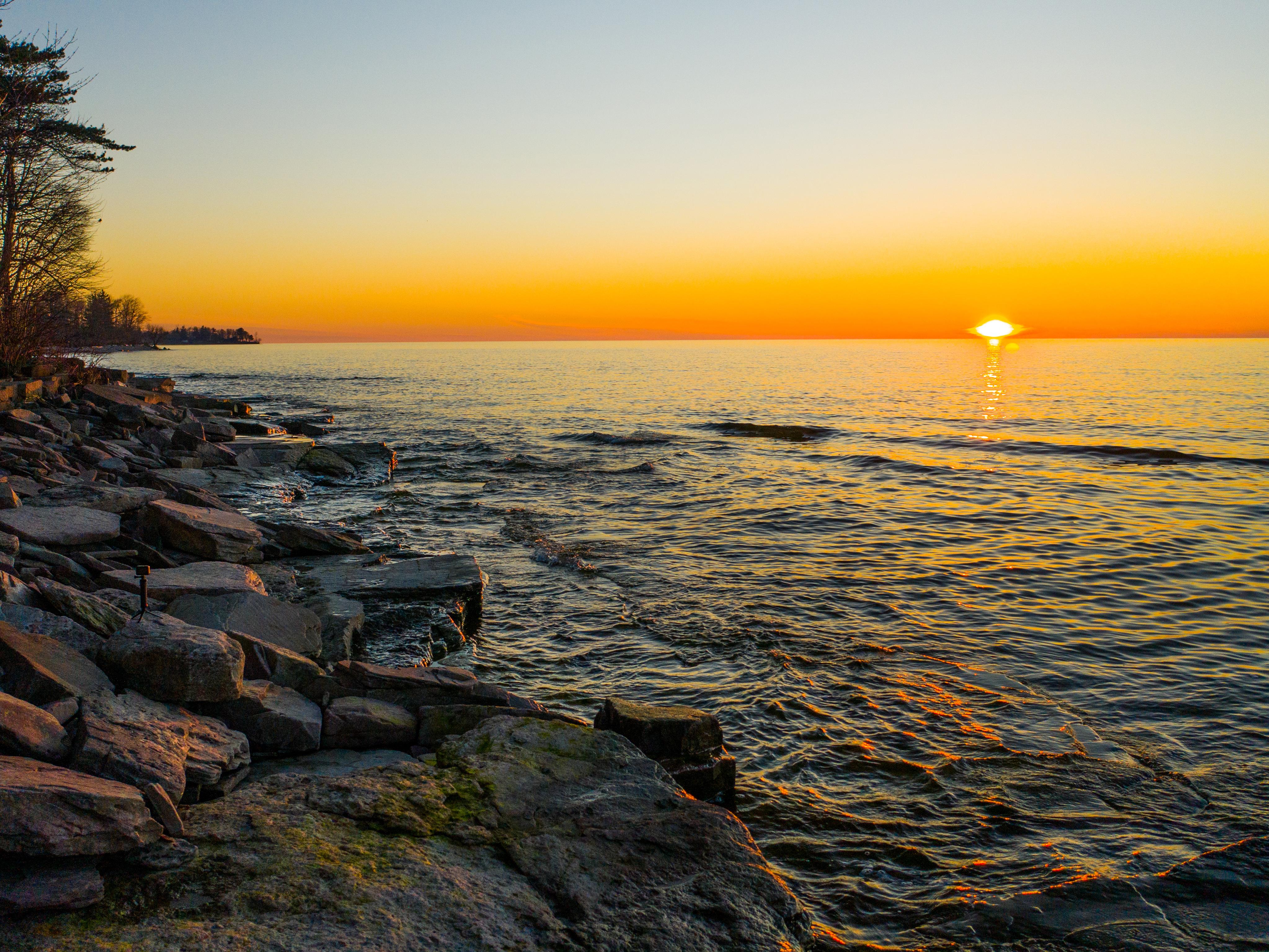SUNY Oswego recently launched the Great Lakes Institute to foster a greater awareness and understanding of the Great Lakes through continued research efforts, academic programming and coursework for students at all levels, and public outreach.
“This will serve as a resource and place to discuss critical issues associated with the Great Lakes,” said Lisa Glidden, the institute’s founding director and a political science faculty member.
The institute’s charter notes it will support faculty and student research opportunities including collaborative and interdisciplinary research; seek external grant and philanthropic support in support of its activities; facilitate course development related to the Great Lakes; and partner and collaborate with relevant entities in the promotion, research, education and stewardship of the Great Lakes.
Scott Furlong, the university’s provost and vice president for academic affairs, said SUNY Oswego hosting such an endeavor makes sense in academic, logistical and environmental contexts.
“It’s an excellent fit due to our geography, our expertise in the space, the importance of fresh water and our ongoing focus on the environment,” Furlong said. “The Great Lakes is the largest freshwater system in the world, and it’s important that we help serve as stewards.”
A cross-campus advisory board has worked to set up the institute and will continue to help guide its activities with so much potential across disciplines for the only New York campus bordering a Great Lake.
Earning state support
A news release from SUNY noted that the Great Lakes Institute received state support as part of a systemwide effort to increase research capacity in the budget developed by Governor Kathy Hochul.
That release said that SUNY Oswego is using this allocation to the Great Lakes Institute to conduct research around water quality monitoring; watershed maintenance; meteorological, climate and socio-economic issues; fisheries and hatcheries; freshwater use and scarcity; indigenous people issues; computational and ecosystem modeling; Great Lake resilience; and water level issues.
“The Great Lakes is already a focus for a multidisciplinary swath of campus,” Glidden noted. “One purpose is to get people from across campus doing lake-related research talking to, and potentially collaborating with, each other.”
Existing assets include many professors working on funded research, the Rice Creek Field Station, the Environmental Research Center, a New York Sea Grant site, a partnership with Outsteps Regional Research Network, membership in the Great Lakes Northern Forest - Cooperative Ecosystems Studies Unit and the university’s partnership in a proposal for the designation of a Lake Ontario National Marine Sanctuary. In addition, the institution-wide multi-year Grand Challenge: Fresh Water for All brought enhanced focus on the many ways the campus could be involved with solutions.
Glidden is also the director of the Outsteps regional consortium, which meets every other week to share research findings and activities, and knows how much is going on throughout relevant higher educational institutions, agencies and more.
Increased opportunities
With the new institute, Glidden's effort involves making agencies and institutions throughout the Great Lakes increasingly aware of what SUNY Oswego is interested in doing, has the capability to do and its ability to serve as a productive partner. She has attended conferences on Great Lakes issues and research in Michigan, Minnesota and Ohio to build upon learning and connecting with potential collaborators.
“We also will seek out opportunities for experiential learning, internships and class collaborations,” Glidded added. “We also want the community to see us as a resource.”
With an eye on future initiatives to better infuse Oswego’s unique geography and academic opportunities into the cross-campus culture, Glidden is looking into creating a team-taught first-year seminar on the Great Lakes.
“We’re also working toward creating a cross-listed course on communicating science, noting that with so much important work being done, it’s important to be able to inform and engage members of the public,” Glidden said.
In terms of other partnerships, Glidden hopes to work with the School of Education to help find ways to make it easier to integrate lessons related to the Great Lakes at all levels of schooling. New York Sea Grant already develops some helpful relevant material working with the National Oceanic and Atmospheric Administration.
Moreover, Glidden would love to see a more public effort such as a Great Lakes Day in the fall semesters that can feature many different activities related to the importance of, projects related to and challenges facing the Great Lakes, specifically Lake Ontario.
That this region of Lake Ontario is under consideration to become a National Marine Sanctuary will further elevate the institute’s efforts.
“Lake Ontario has such a huge impact well beyond our region, and this represents a large opportunity to really support the public good,” Glidden said.




